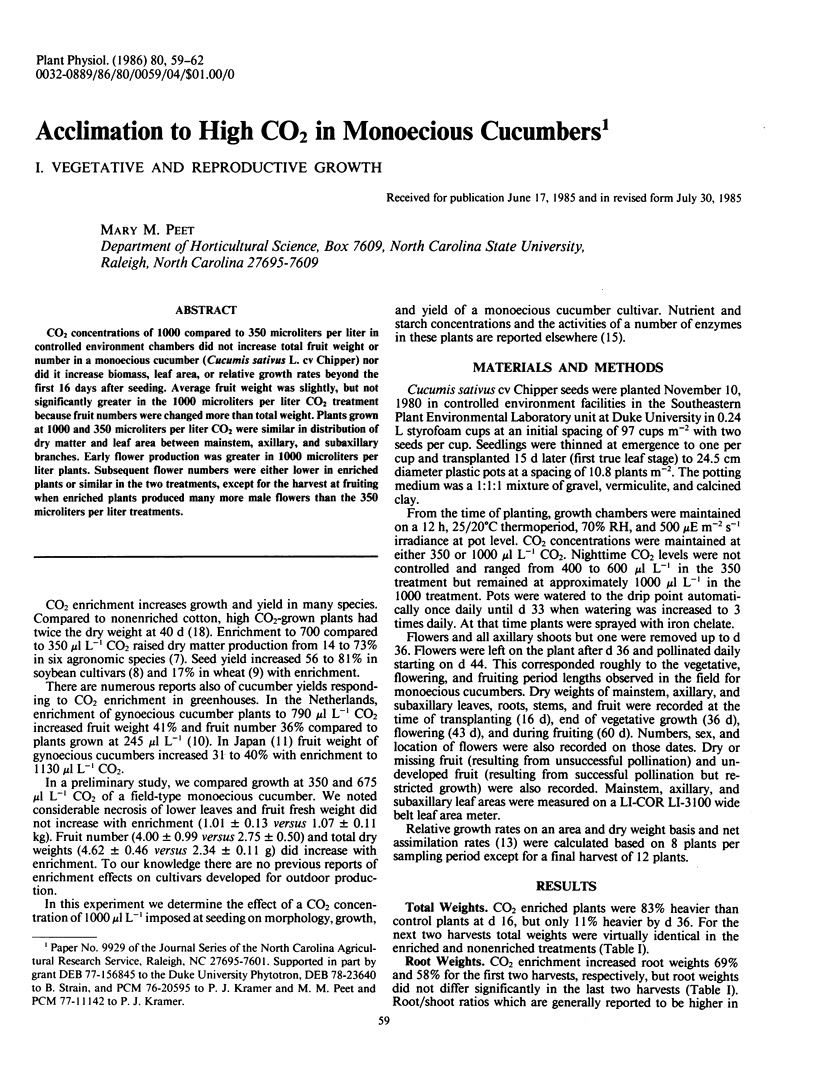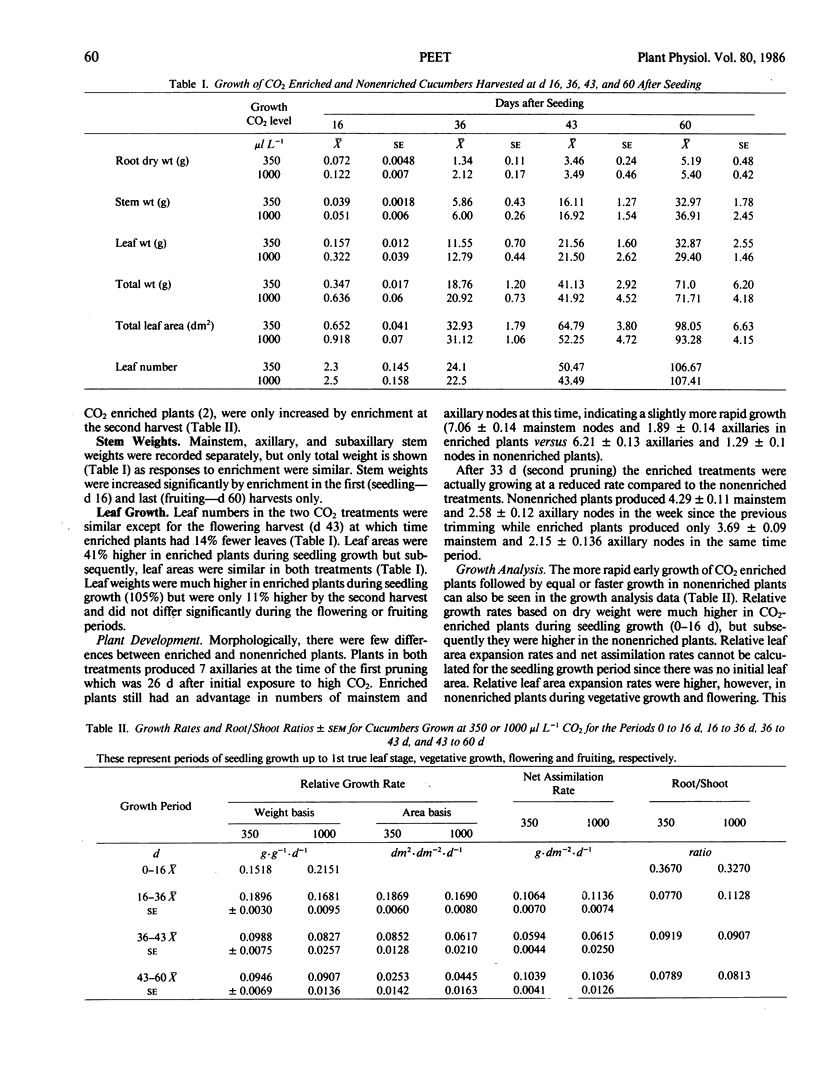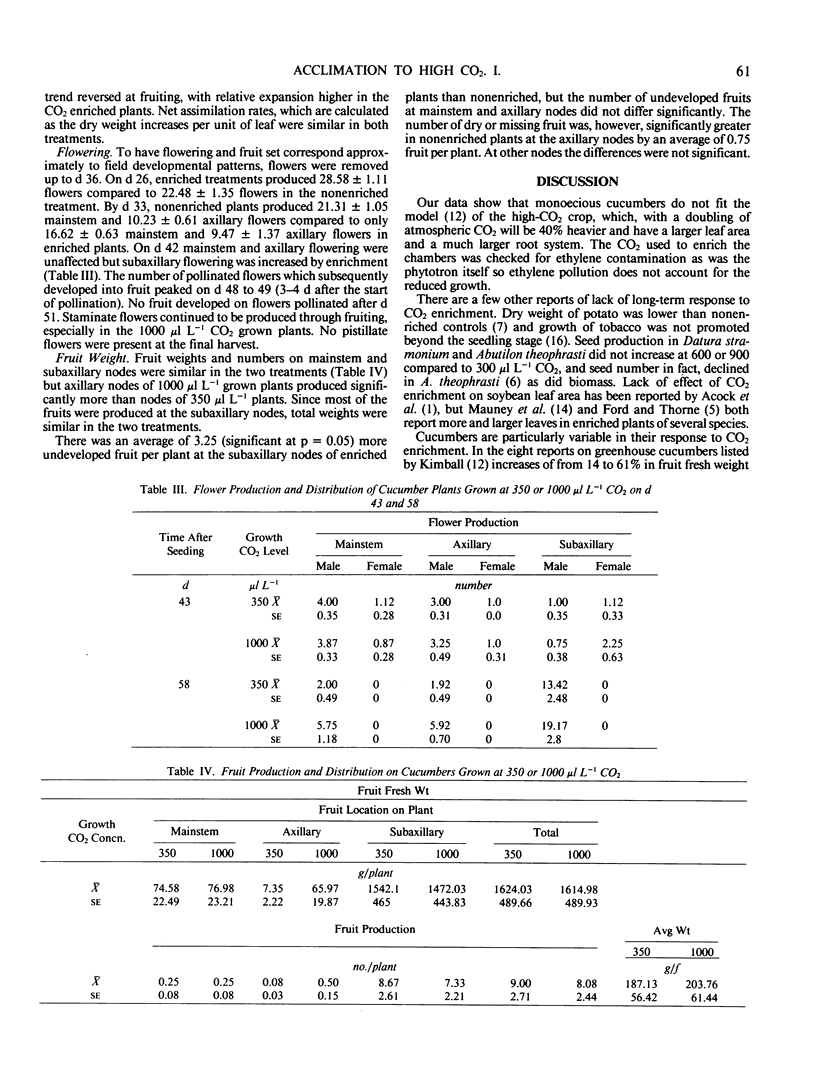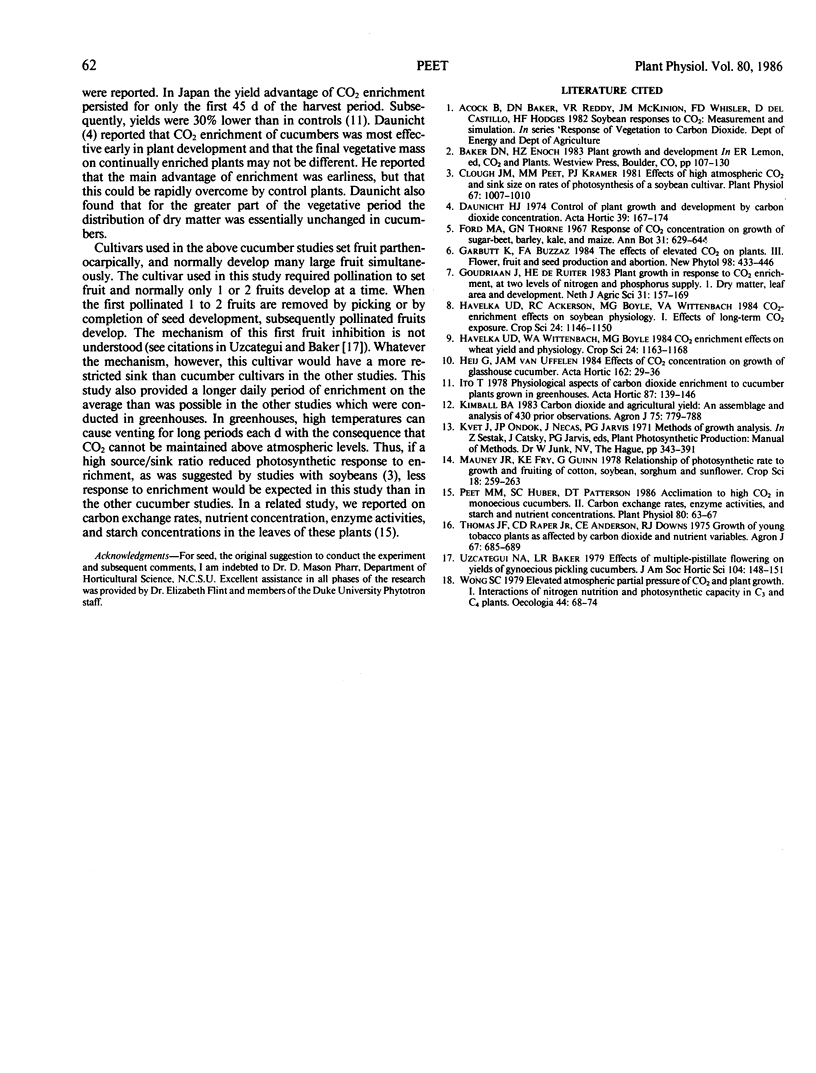Abstract
CO2 concentrations of 1000 compared to 350 microliters per liter in controlled environment chambers did not increase total fruit weight or number in a monoecious cucumber (Cucumis sativus L. cv Chipper) nor did it increase biomass, leaf area, or relative growth rates beyond the first 16 days after seeding. Average fruit weight was slightly, but not significantly greater in the 1000 microliters per liter CO2 treatment because fruit numbers were changed more than total weight. Plants grown at 1000 and 350 microliters per liter CO2 were similar in distribution of dry matter and leaf area between mainstem, axillary, and subaxillary branches. Early flower production was greater in 1000 microliters per liter plants. Subsequent flower numbers were either lower in enriched plants or similar in the two treatments, except for the harvest at fruiting when enriched plants produced many more male flowers than the 350 microliters per liter treatments.
Full text
PDF



Selected References
These references are in PubMed. This may not be the complete list of references from this article.
- Clough J. M., Peet M. M., Kramer P. J. Effects of High Atmospheric CO(2) and Sink Size on Rates of Photosynthesis of a Soybean Cultivar. Plant Physiol. 1981 May;67(5):1007–1010. doi: 10.1104/pp.67.5.1007. [DOI] [PMC free article] [PubMed] [Google Scholar]
- Peet M. M., Huber S. C., Patterson D. T. Acclimation to High CO(2) in Monoecious Cucumbers : II. Carbon Exchange Rates, Enzyme Activities, and Starch and Nutrient Concentrations. Plant Physiol. 1986 Jan;80(1):63–67. doi: 10.1104/pp.80.1.63. [DOI] [PMC free article] [PubMed] [Google Scholar]


